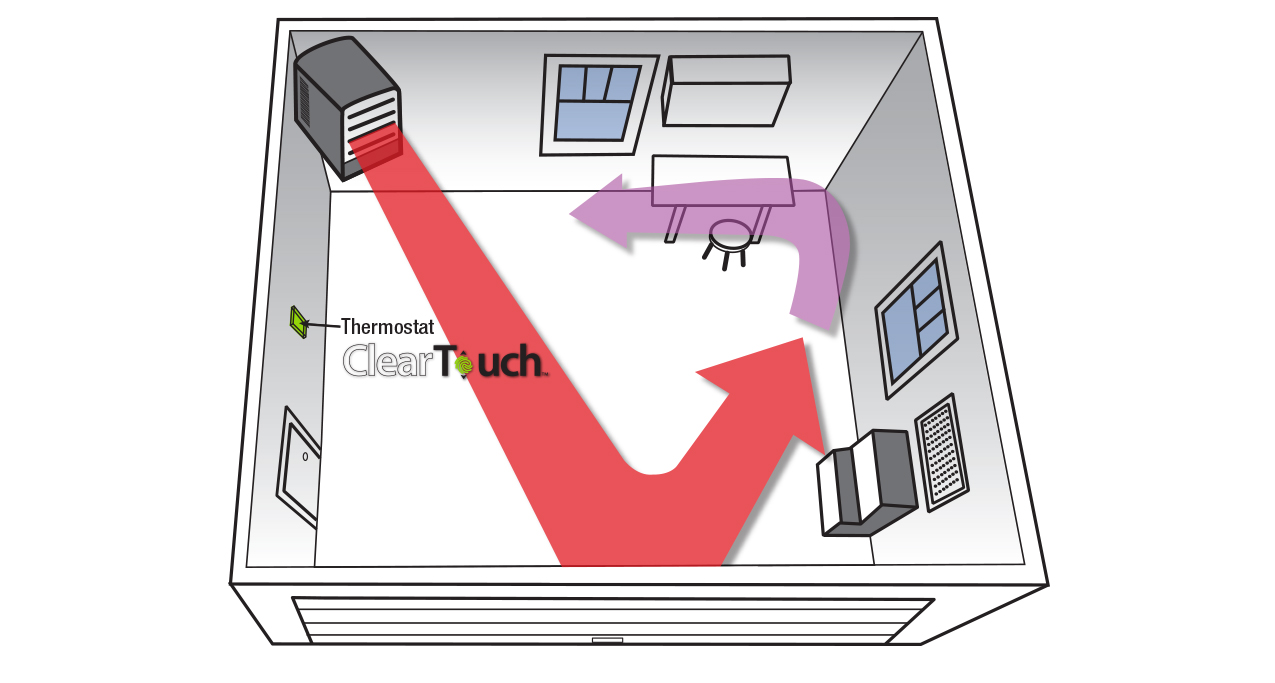Your garage has the potential for much more than a place to park your car.
Take Back Your Garage With King Garage Heaters.
Whether you happen to live somewhere cold and want to be able to get into a warm car without braving the chill or you’re looking to convert your garage into something else – a room, a shop, etc. – heat is something you’ve probably considered adding to the garage space.
Garages are typically not part of a house’s heating system and often have minimal insulation, making them chilly and uncomfortable when the weather turns cold. Keeping the garage warm in the winter is an essential requirement for year-round use and comfort.
The fact is, even if you are not using the garage for any additional purpose, your car or whatever you have stored should be kept warm when the temperatures go down.
Of course, your main use or purpose for your garage will dictate what kind of heating options you should consider, especially if you will be spending more time there.
Not all options to heat or keep your garage warm require something grand. At times, it is also enough to look at and improve the construction of the garage itself. In detail, here are some easy steps you can take.
ASSESS YOUR NEEDS
Perhaps the first hurdle you’ll have to cross is determining how difficult it will be to heat your garage space. The size of the garage is a huge factor, as well as just how cold it gets in your neck of the woods. In addition, you have to consider how well insulated the garage is or if you’re willing to renovate the garage to add additional insulation.
To determine what wattage heater, you need in your specific garage refer to HOW TO SIZE A GARAGE HEATER TO YOUR SPACE.
ASSESSING THE SPACE
1. Check The Walls And The Flooring
The materials used during the construction will determine how good it performs in cold weather. For example, most garages have concrete floors and open studded walls, which is, unfortunately, not the best if you want a warm place to hang out during winter. You will have a hard time keeping it warm, so insulating is recommended.
2. Install The Right Insulation
Despite the wrong materials on the walls, you can make up for it by insulating it and the ceiling. There are a few options to use depending on how you want to use your garage. There are insulation batts, as well as blown-in insulation that you can install between wall studs. On top, you can use plywood, drywall or other types of paneling. If you are planning to use the space for longer periods of time or as a living area, then blown-in insulation is the best option. It is energy efficient and has a higher R-value compared to foam batts or rolls.
Even if you are not using the garage as much, insulating it still makes sense so that draft will be prevented from coming in. It will also keep the garage from losing any heating you use.
3. Improve The Flooring
In many cases, the original concrete flooring in garages is normally left as it is because upgrading it will be a waste of money. However, because more and more people are using it for other purposes, it becomes necessary to change it as concrete floors get very cold and make any heating unsuccessful. If you plan to keep the garage as warm as the rest of your home, you should go for wooden flooring, otherwise, carpet tiles or floor mats might be enough. If you do not need to really warm it, you can just use a huge throw rug to cover the cold concrete during winter.
4. Check Your Garage Door
Whatever heating you install will not work if your is letting the heat out and the cold air in. Ensuring its good working condition will also assure you that the heat stays inside. You might want to opt for a steel door that is insulated. They are very durable and also have foam core insulation to keep the cold out, which is why it is quite energy efficient. Just make sure you check for any drafts and if you feel some cold air coming in, you can install some weather-stripping at the sides and the bottom.
5. Heating Your Garage: Garage Heater Solutions
Before You Shop
First answer a few questions about your garage and your needs. Considering these questions will help you find a heater that will efficiently warm your space.
- Do you plan on constantly heating the space?
- Do you need to move your heater from place to place?
- Do you need a focused heat for a work space?
Permanently Mounted Garage Heaters
To keep your whole garage warm and toasty, a hard-wired permanently mounted garage heater is essential and offers an efficient way to maintain a steady supply of hot air. Our fan-forced electric garage heaters are perfect for garages, workshops, basements and crawl spaces. These tough, rugged, high performance heaters will keep your workspace warm and you comfortable while working.
Hard-wired garage heaters connected to your home’s electrical system. To do this, you will run a sheathed cable from your circuit breaker box to the heater.
Many heaters include an in-built thermostat to control the temperature. If you want to use a remote thermostat, you’ll run the cable from the breaker box to the thermostat and then from the thermostat to the unit. Once all the wiring is done, your new garage heater will run off your home’s electric system and you’ll never need to worry about it again.
Always remember, if you’re not comfortable with wiring call an electrician to do the job for you.
Portable Plug-In Space Heaters
If you don’t spend much time out there, a temporary heating solution may be just what you need to warm it up when needed. Looking to warm your hands while you wait for your car to warm up in the morning or to accomplish a quick project on the work bench? A portable space heater is an easy solution for quick, focused heat in one area.
Wall Mounted Radiant Heaters
Ideal for spot heating, infrared heaters provide radiant heat that warms people without heating the surrounding air. They provide directional heat, down where you need it.
BEST MOUNTING LOCATION
Mount in corner, aimed at a 45-degree angle toward garage door. Point louvers down. Locate thermostat away from airflow of heater.

